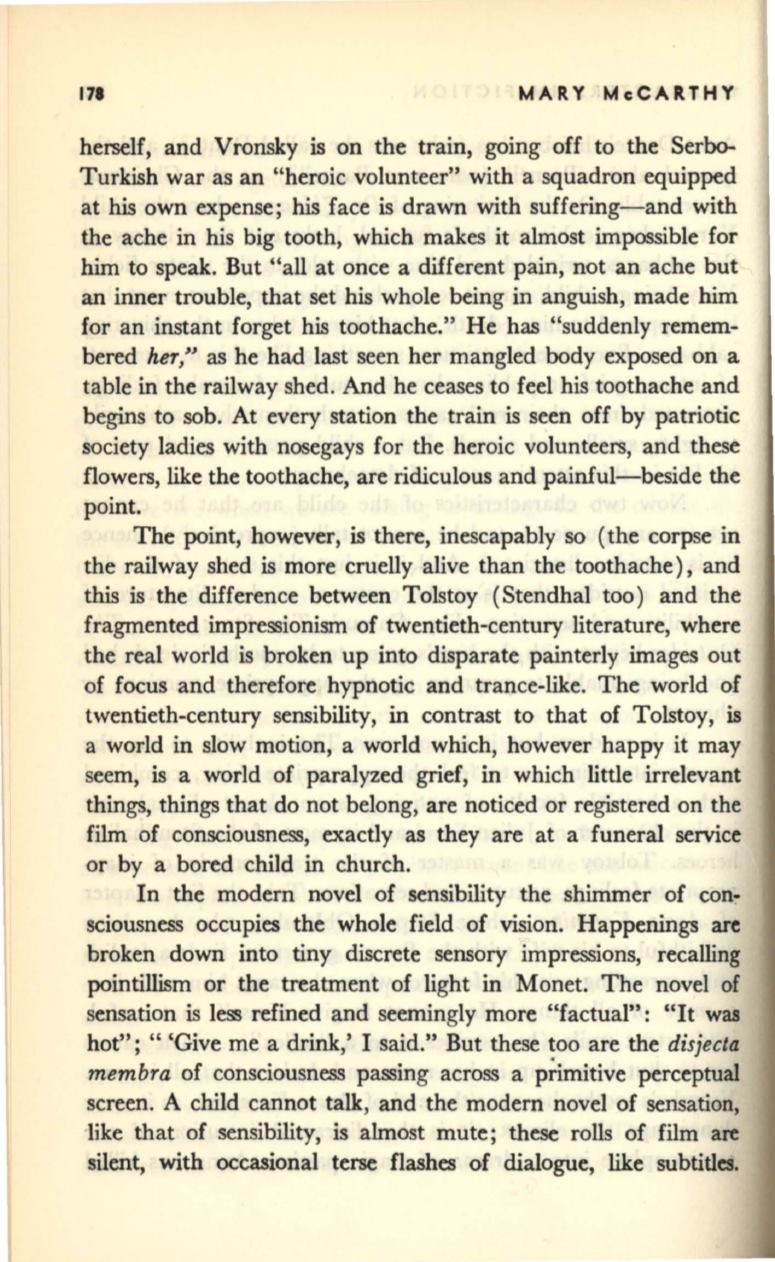
171
MARY Mc:CARTHY
herself, and Vronsky is on the train, going off to the
Ser~
Turkish war as an "heroic volunteer" with a squadron equipped
at
his
own expense;
his
face is drawn with suffering-and with
the ache in his big tooth, which makes it almost impossible for
him to speak. But "all at once a different pain, not an ache but
an inner trouble, that set his whole being in anguish, made
him
for an instant forget his toothache." He has "suddenly remem–
bered
her,"
as he had last seen her mangled body exposed on a
table in the railway shed. And he ceases to feel his toothache and
begins to sob. At every station the train is seen off by patriotic
society ladies with nosegays for the heroic volunteers, and these
flowers, like the toothache, are ridiculous and painful-beside the
point.
The point, however,
is
there, inescapably so (the corpse in
the railway shed is more cruelly alive than the toothache), and
this is the difference between Tolstoy (Stendhal too) and the
fragmented impressionism of twentieth-century literature, where
the real world is broken up into disparate painterly images out
of focus and therefore hypnotic and trance-like. The world of
twentieth-century sensibility, in contrast to that of Tolstoy,
is
a world in slow motion, a world which, however happy it may
seem, is a world of paralyzed grief, in which little irrelevant
things, things that do not belong, are noticed or registered on the
film of consciousness, exactly as they are at a funeral service
or by a bored child in church.
In the modern novel of sensibility the shimmer of
con~
sciousness occupies the whole field of vision. Happenings are
broken down into tiny discrete sensory impressions, recalling
pointillism or the treatment of light in Monet. The novel of
sensation is less refined and seemingly more "factual": "It was
hot"; " 'Give me a drink,' I said." But these too are the
disjecta
membra
of consciousness passing across a p;imitive perceptual
screen. A child cannot talk, and the modern novel of sensation,
like that of sensibility, is almost mute; these rolls of film art
silent, with occasional terse flashes of dialogue, like subtitles.


